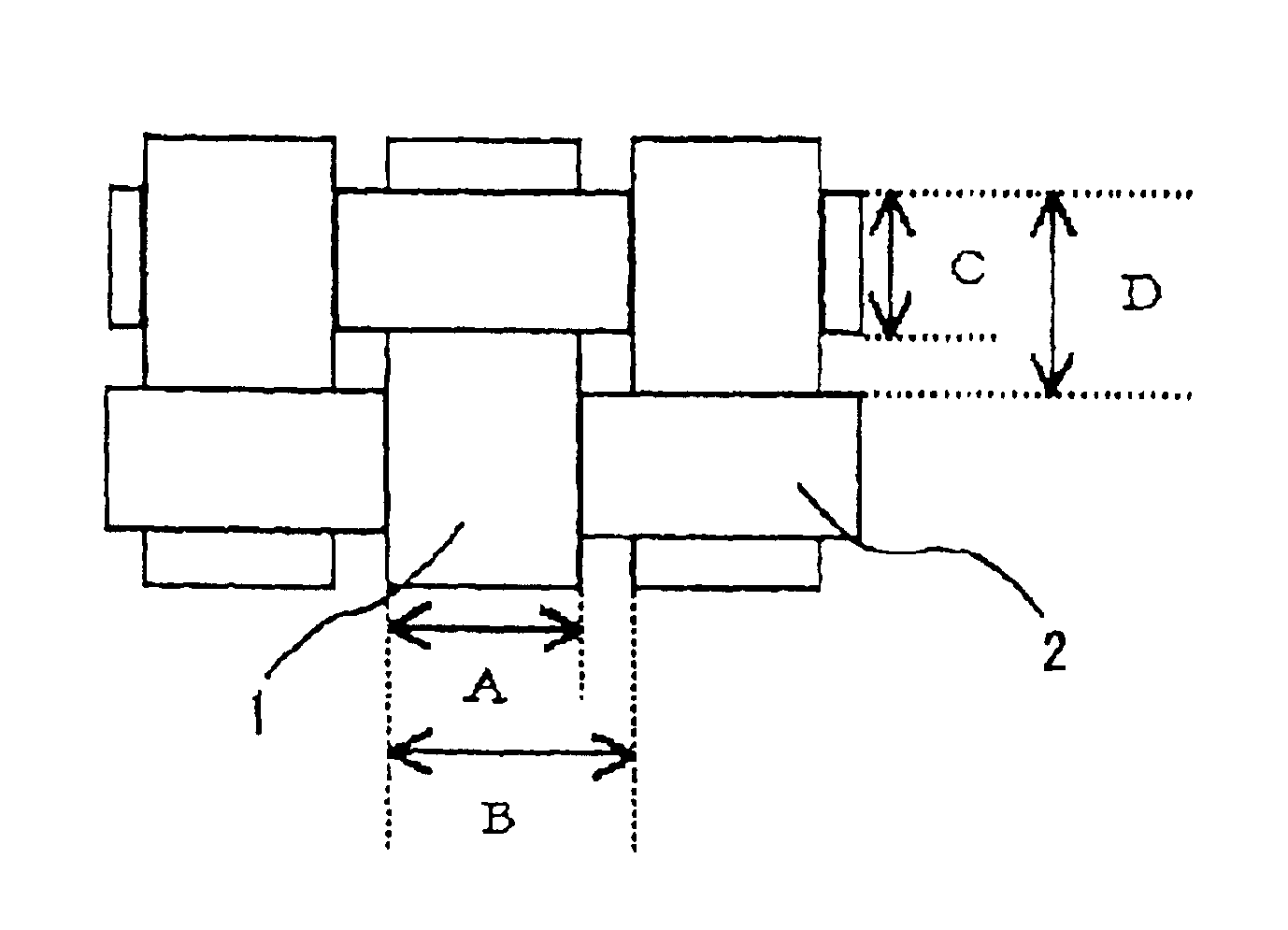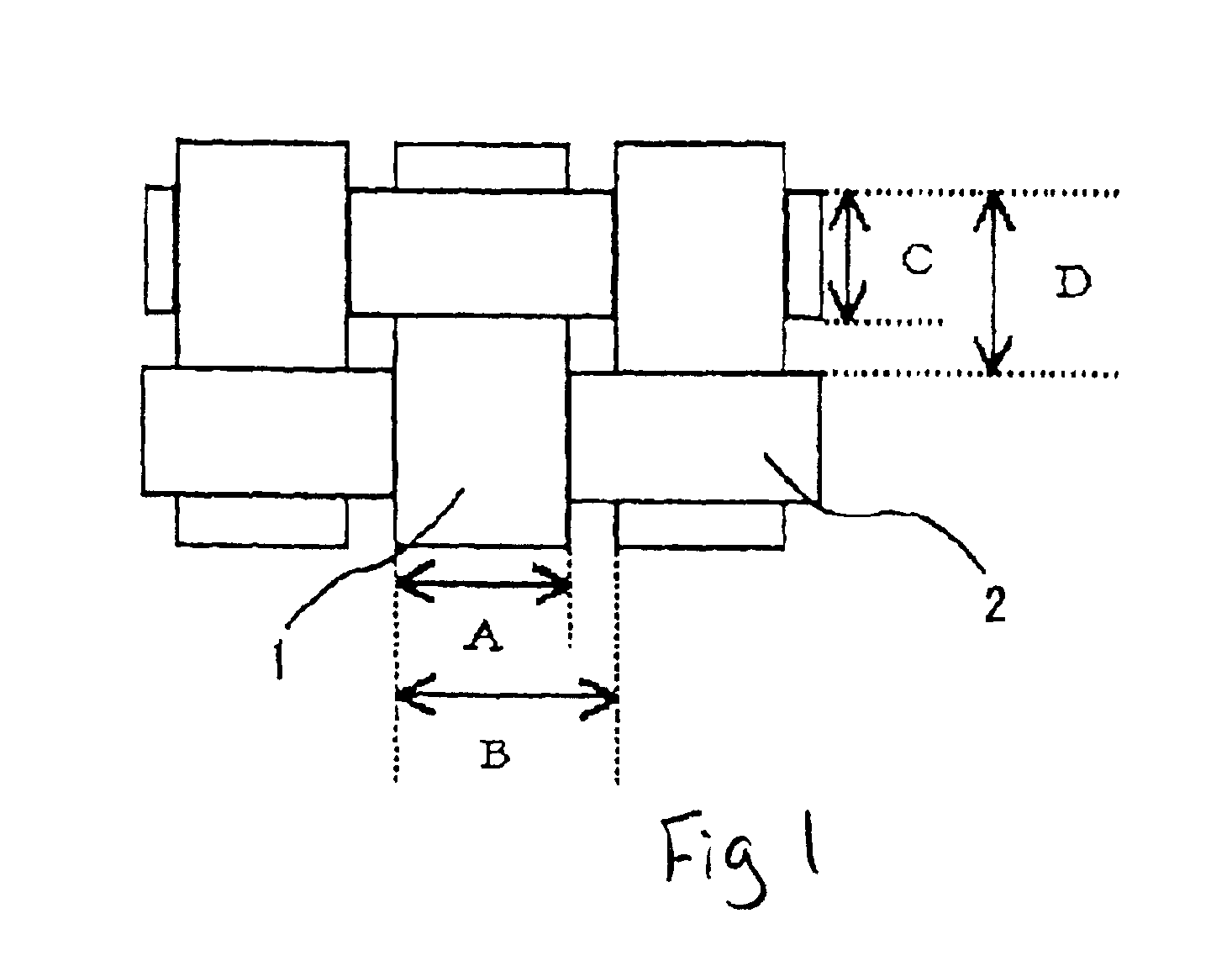Electrically conductive fabric
a fabric and electrical conductivity technology, applied in the field of electrical conductivity fabric, can solve the problems of fabric being often required to exhibit flame retardancy, fabric is often frayed, and the requirement of fabric is increasing, and achieves the effect of preventing the back leakage of resin and high electrical conductivity
- Summary
- Abstract
- Description
- Claims
- Application Information
AI Technical Summary
Benefits of technology
Problems solved by technology
Method used
Image
Examples
example 1
A plain weave fabric using a 50d-24f polyester multifilament yarn as warp and weft was subjected to scouring and then heat-set at 190.degree. C. for 2 minutes to adjust the percent fabric surface occupancy of warp and that of weft to 95% and 72%, respectively. Thereafter, the fabric was etched in a solution comprising 50 g / L NaOH for about 10 minutes at 90.degree. C., and then rinsed and dried. Thereafter, the etched fabric was immersed in Pd / Sn colloidal catalyst solution for about five minutes at 40.degree. C. Thereafter, the primed fabric was then rinsed and immersed in a developer solution comprising 0.1N HBF.sub.4 for a few minutes. The fabric was rinsed and then immersed in an electroless copper bath operating at 40.degree. C., having the following composition that CuSO.sub.4 5H.sub.2 O 15 g / L, Ethylenediaminetetraacetic acid (40%) 50 cc / L, NaOH 15 g / L, and HCHO (37%) 10 cc / L, so the fabric was copper plated. Separately, toluene was added to 100 parts by weight of Toacron SA62...
example 2
A plain weave fabric using a 50d-36f polyester multifilament yarn as warp and weft was subjected to scouring and then heat-set at 190.degree. C. for 2 minutes to adjust the percent fabric surface occupancy of warp and that of weft to 99% and 78%, respectively. The fabric was then plated in the same manner as in Example 1. Separately, toluene was added to 100 parts by weight of Toacron SA6218 (an acrylic resin manufactured by Toupe Co.) and 1.5 parts by weight of a UD crosslinking agent (an isocyanate crosslinking agent manufactured by Dainichiseika Colour & Chemicals Mfg. Co.) to adjust the viscosity of the resulting resin solution to 25,000 cPs. The resin solution was then applied to the fabric surface in an amount of 5 g / m.sup.2 as solids content by a knife coating method, followed by drying at 130.degree. C. for 2 minutes. The performance of the thus-coated fabric is shown in Table 1.
PUM
| Property | Measurement | Unit |
|---|---|---|
| fabric elongation | aaaaa | aaaaa |
| elongation | aaaaa | aaaaa |
| electrically conductive | aaaaa | aaaaa |
Abstract
Description
Claims
Application Information
 Login to View More
Login to View More - R&D
- Intellectual Property
- Life Sciences
- Materials
- Tech Scout
- Unparalleled Data Quality
- Higher Quality Content
- 60% Fewer Hallucinations
Browse by: Latest US Patents, China's latest patents, Technical Efficacy Thesaurus, Application Domain, Technology Topic, Popular Technical Reports.
© 2025 PatSnap. All rights reserved.Legal|Privacy policy|Modern Slavery Act Transparency Statement|Sitemap|About US| Contact US: help@patsnap.com


